Nutrients are divided into two main groups: organic and inorganic. Organic compounds make up 90% to 95% of the plant’s dry mass and include carbon, oxygen, and hydrogen, which come from atmospheric CO₂ and water in the soil. The remaining 5–10% make up the so-called mineral fraction.
The positive effects of adding mineral substances to the soil—such as ash from fires or lime in humid regions—have been known since ancient times. However, serious scientific research into the role of these elements in plant growth began only about 150 years ago.
Nutrition for the cannabis plant
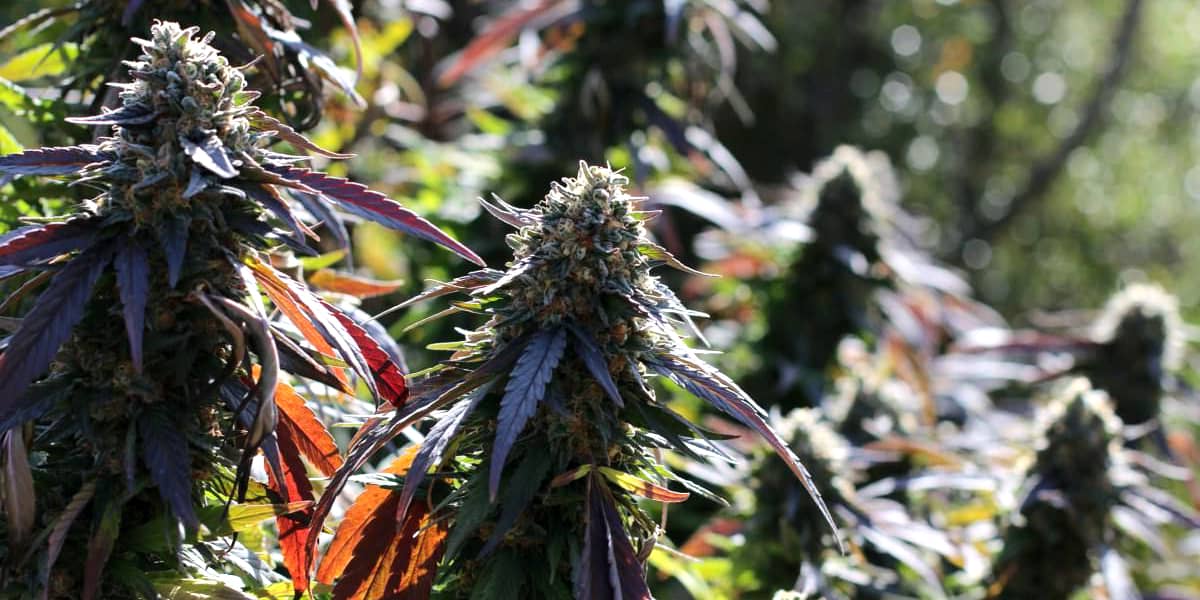
Before methods for analyzing soil and plant tissue became available, theories about the functions of specific elements were largely speculative. Eventually, the concept of “essential elements” for plant growth was introduced.
One of the key ideas is the "law of the minimum" or Liebig’s law (named after the German chemist Justus von Liebig), formulated in the mid-19th century. According to this law, plant growth depends on many factors (water, CO₂, nitrogen, light, air humidity), and if even one is lacking, biomass accumulation will be limited.
Later, in 1880, botanist Julius von Sachs showed that plants can be grown in a nutrient solution without soil (hydroponics). His experiments proved that the presence of an element in plant tissues does not automatically mean it is essential.
Since plants are not selective in what they absorb, they may accumulate harmful compounds—or safe but useless ones.
Essential mineral elements
The term “essential mineral element” was introduced by American scientists Arnon and Stout in 1934. To be considered essential, a substance must:
- Be required for the plant to complete its life cycle.
- Not be replaceable by another element.
- Be directly involved in metabolism or a vital biochemical process (e.g., enzymatic reactions).
If an element only partially fulfills these roles or reduces the toxicity of another, it’s considered beneficial.
For higher plants, including cannabis, 17 essential elements have been identified, classified into macro- and micronutrients. Micronutrients participate in specific enzymatic reactions but are still vital to completing the plant’s life cycle.
Some elements, like nickel, sodium, and silicon, are vital only for certain species and considered beneficial for others.
| Classification | Elements (inorganic only) |
| Macronutrients | nitrogen, phosphorus, potassium, sulfur, magnesium, calcium |
| Micronutrients | iron, manganese, zinc, copper, boron, molybdenum |
| Beneficial elements | sodium, silicon, cobalt, iodine, vanadium, etc. |
As analytical methods and fertilizer production evolve, the number and ratios of added elements will be refined. Some elements previously thought insignificant may be included in fertilizers as trace additives, especially among micronutrients.
Macronutrients for cannabis
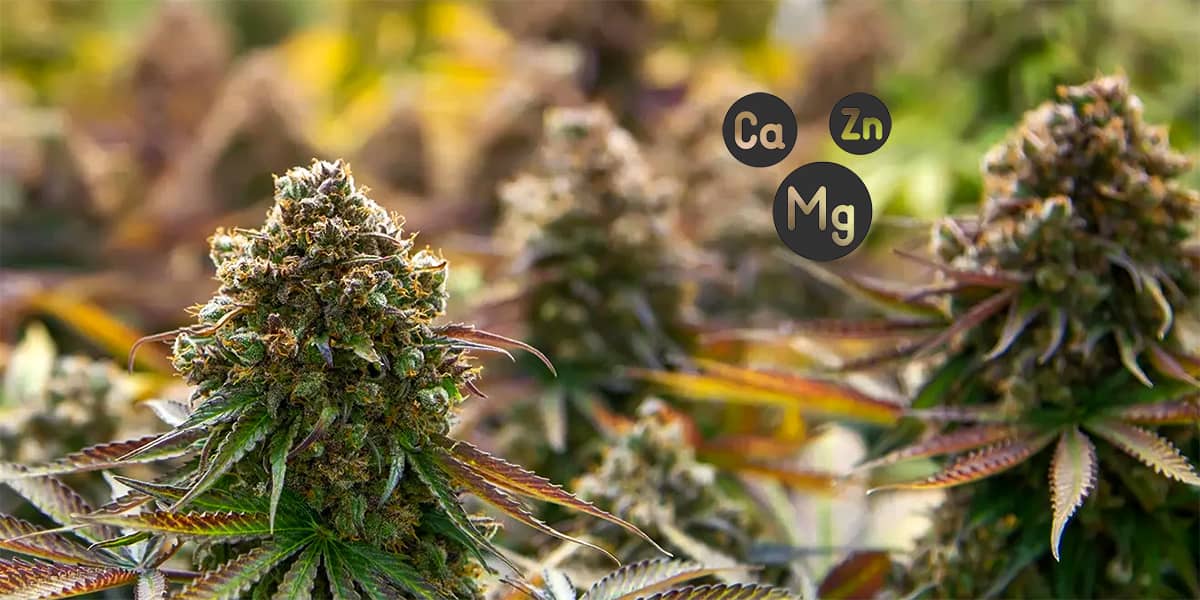
The following six elements (N, P, K, Mg, S, Ca), along with carbon, hydrogen, and oxygen, are considered macronutrients. They are required in large amounts and are integral to molecular structure (more than 0.1% of tissue mass).
Nitrogen
After water, nitrogen is the most important growth element and is essential for protein synthesis. Nitrogen deficiency is common due to low natural levels in most soils—even organic ones.
Plants absorb nitrogen as nitrate (NO3–), ammonium (NH4+), and also as ammonia through their leaves. Leguminous plants form symbiotic relationships with nitrogen-fixing bacteria that convert atmospheric nitrogen (N2) into plant-available forms (ammonium or nitrate). This process depends on the presence of a supportive soil microflora.
For healthy growth, a stable nitrogen level is crucial. In dry plant matter, nitrogen content ranges from 1.5% to 5%.
Phosphorus
Phosphorus is taken up in the form of phosphate ions—mainly H2PO4– in neutral or slightly acidic soils, or HPO42- in alkaline soils. It plays a key role in ATP formation and is essential in respiration and photosynthesis.
Phosphorus has low solubility in alkaline soils, so it’s often applied via nutrient solutions (such as P-K 13-14). Phosphorus availability also depends on symbiosis with mycorrhizal fungi, which help dissolve it.
Potassium
Potassium is a major component of many fertilizers. Like nitrogen and phosphorus, it is mobile within the plant, so its deficiency is first visible in older lower leaves. It regulates stomatal function and plant transpiration.
Potassium activates more than 50 enzymes and can sometimes be replaced by sodium. It also supports leaf and stem turgor. K+ is the most abundant plant cation, making up as much as 10% of the dry mass.
Sulfur
Sulfur is part of amino acids and enzymes and is essential in cellular respiration. It is absorbed as sulfate (SO42–) and transported via xylem. It can also be absorbed through stomata as SO2 gas released by burning fossil fuels.
SO2 converts to bisulfite, which displaces magnesium from chlorophyll and reduces photosynthesis. However, in polluted areas, high CO2 levels may partially offset this effect. The sulfur-to-nitrogen ratio in plants is roughly 1:15.
Calcium
Calcium is found in plant cell walls (as calcium pectate), providing rigidity, much like bones in animals. It also plays a role in light and temperature adaptation. It is absorbed as Ca2+ and is abundant in most soils. Deficiencies are rare except in acidic peat soils.
Lime is commonly added to acidic soils to improve structure. In hydroponics or when using reverse osmosis water, calcium deficiency may occur, leading to poor root development. Tissue content is about 1% of dry mass.
Magnesium
Magnesium is a component of chlorophyll and essential for photosynthesis. It is involved in energy transfer, binding to ATP. It is absorbed as Mg2+ and is usually sufficient in soils—except sandy or acidic types. Magnesium is mobile in plants, so its deficiency shows in older leaves between the veins.
Conclusion
Understanding the role of macronutrients in nutrition in growing cannabis seeds allows for effective management of plant growth and development at each stage of the plant's life cycle. A balanced supply of nitrogen, phosphorus, potassium, magnesium, sulfur, and calcium forms the foundation of a healthy and productive crop.
Regardless of the growing method—soil or hydroponic—attention to the mineral composition of the environment helps prevent deficiencies and allows your plant to reach its full potential.
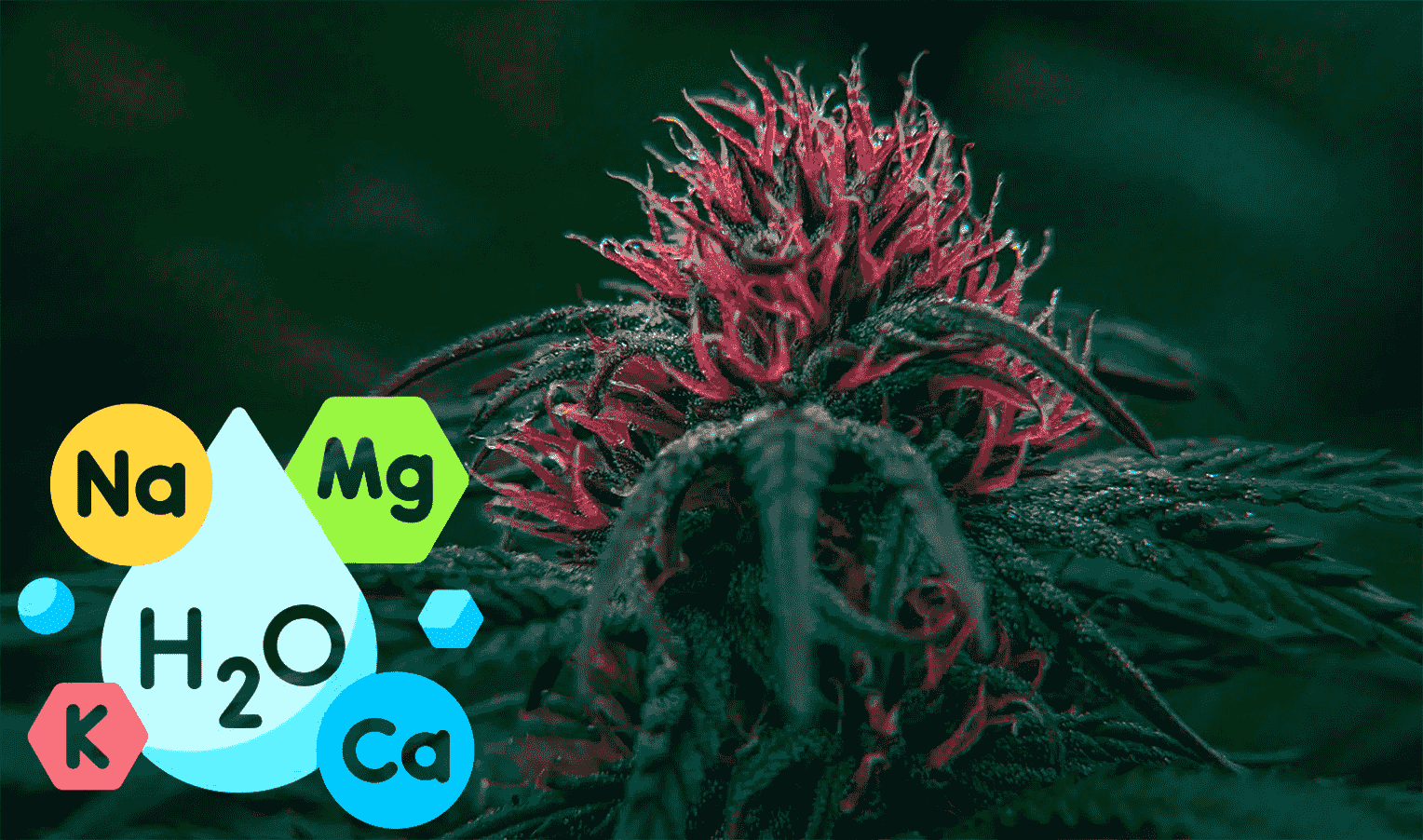
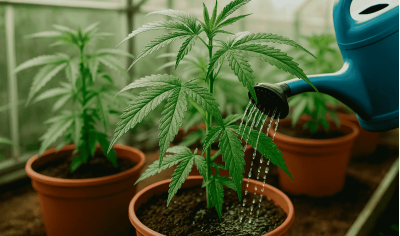

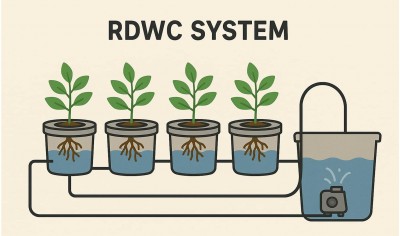
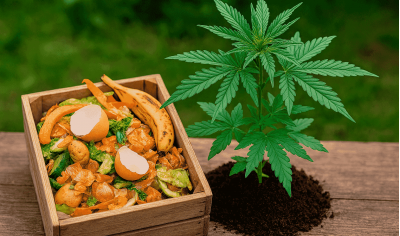


Write a comment